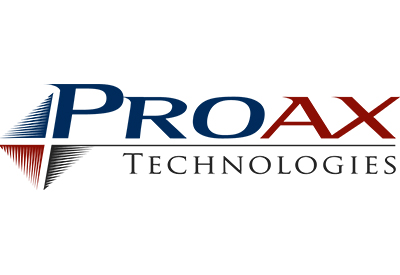3 Things Manufacturers Should Know About Industry 5.0
November 12, 2024

While many manufacturers are still embracing the principles of Industry 4.0, the next evolution, Industry 5.0, is already beginning to take shape. Unlike Industry 4.0, which was a giant leap forward in automation and digitalization, Industry 5.0 represents a reconsideration of how smart technology platforms can work alongside humans. This includes technologies like artificial intelligence (AI), the Industrial Internet of Things (IIoT), and machine learning, which can enhance the creativity and problem-solving skills that human intervention brings to manufacturing.
Although Industry 5.0 may take time to fully develop in the U.S., its principles are gaining traction. Manufacturers should understand these concepts now to better prepare for future changes. Let’s explore the three key things manufacturers should know about Industry 5.0 and how it will change modern manufacturing.
1. Industry 5.0 Strengthens Human-Machine Collaboration
Industry 4.0 placed smart technology at the core of manufacturing, fostering data-driven operations, increased efficiency, and a connected ecosystem. In contrast, Industry 5.0 seeks to build a meaningful collaboration between humans and technology, blending automation with human intuition, creativity, and critical thinking.
At its heart, Industry 5.0 focuses on more than just productivity; it aims to create a human-centric industry that leaves a lasting, positive impact on both society and the environment. Its principles include:
- Human-Centric Industry: This principle focuses on empowering human creativity and problem-solving, utilizing smart automation tools to enhance the human element rather than replace it.
- Sustainable Industry: Industry 5.0 emphasizes using automation solutions to reduce waste, conserve resources, and create more sustainable manufacturing processes. It goes beyond mitigating environmental damage — it seeks to reverse it.
- Resilient Industry: With a focus on agility and flexibility, Industry 5.0 aims to prevent supply chain disruptions and production bottlenecks, creating an industry that can anticipate and adapt to global events.
In short, Industry 5.0 aims to foster stronger human-machine collaboration, focusing on innovation that serves both people and the planet.
2. Industry 5.0 Will Enable More Customized Manufacturing
A key feature of Industry 5.0 is the integration of collaborative robots (cobots) working alongside skilled workers. Unlike autonomous robots, which perform repetitive tasks, cobots are designed for customized manufacturing. Under human direction, cobots can execute precise and unique machining tasks based on real-time customer requests.
This opens new opportunities for product personalization and customization. Here are several Industry 5.0 tools that help manufacturers develop more personalized solutions:
- Connected Data Management Systems: These systems collect, store, and analyze customer data, allowing manufacturers to respond quickly with customized product designs.
- Smarter AI and Machine Learning: AI platforms in Industry 5.0 can anticipate customer preferences before the design process even begins, streamlining the production of custom products.
- Digital Twins and Simulations: These technologies help manufacturers maximize prototyping efficiency and ensure that custom products meet specific application requirements.
Customization via Industry 5.0 also improves quality control. For instance, machine learning can identify potential design flaws based on customer input, allowing engineers to create individualized workarounds before production begins, ensuring a higher-quality final product.
3. Industry 5.0 Enhances Flexibility in the Face of Change
One of the biggest shifts from Industry 4.0 to 5.0 is its focus on empowering people, not just machines. This new focus will help manufacturers adapt to a variety of changing environmental and market factors, including:
- Attracting and Retaining Talent: With skilled labor shortages affecting manufacturing, Industry 5.0 creates more dynamic and engaging environments where workers can apply their creativity and problem-solving skills, making the industry more attractive to top talent.
- Sustainable Manufacturing Practices: With sustainability becoming a business imperative, Industry 5.0 encourages manufacturers to reduce waste and optimize resources, aligning with consumer demands while pushing forward technological innovations to combat climate change.
- Global Market Instability: Whether dealing with supply shortages, rising costs, or environmental disasters, Industry 5.0 provides a more resilient framework. By connecting powerful technological platforms with human decision-making, manufacturers will be better equipped to handle disruptions and pivot when necessary.
By embracing these principles, Industry 5.0 will help manufacturers adapt quickly and remain competitive in an unpredictable global market.
Conclusion: Preparing for Industry 5.0
Industry 5.0 represents the next step in the evolution of manufacturing, one that integrates human creativity with smart technology. As the lines between human intervention and automation blur, manufacturers will need to rethink how they engage with production models and embrace this more flexible, collaborative approach to stay ahead of the curve.
Although the full implementation of Industry 5.0 is still on the horizon, preparing now by adopting these key concepts will set manufacturers up for success. It’s time to begin exploring how human-machine collaboration, sustainability, and customization can transform your manufacturing operations and future-proof your business.
Related Story
Outdoor Enclosures – The Unsung Heroes
Outdoor enclosures are everywhere—by the roadside, on sidewalks, or alongside railways—and yet they are often overlooked despite their vital role in our daily lives. These seemingly simple metal boxes are responsible for protecting highly critical equipment that ensures the smooth operation of essential infrastructure, such as telecoms, utilities, and transportation systems. Without them, the flow of information and services we rely on could be compromised.


